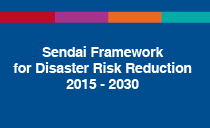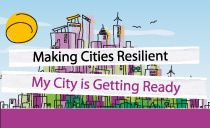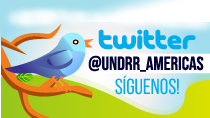-
introduction
The Sendai Framework for Disaster Risk Reduction 2015-2030 was adopted at the Third United Nations World Conference on Disaster Risk Reduction, held from 14 to 18 March, 2015 in Sendai, Miyagi (Japan). This conference made allowed for countries to:
A.) Adopt a framework for disaster risk reduction post 2015 that is concise, specific, prepared with vision and action-oriented;
-
B.) Complete the assessment and review of the implementation of the Hyogo Framework for Action 2005-2015: Building the Resilience of Nations and Communities to Disasters;
-
C.) Consider the experience acquired through the strategies, institutions and regional and national disaster risk reduction plans and their recommendations, as well as the relevant regional agreements for the implementation of the Hyogo Framework for Action;
-
D.) Determine the modalities of cooperation based on commitments towards the implementation of a disaster risk reduction framework post 2015;
-
E.) Identify modalities for the periodic review of the implementation of the Sendai Framework for Disaster Risk Reduction.
During the World Conference, States also reiterated their commitment to address disaster risk reduction and increase resilience to disasters with a renewed sense of urgency in the context of sustainable development and poverty eradication, and to integrate both disaster risk reduction and increased resilience in policies, plans, programmes and budgets at all levels. The structure of this new framework thus establishes the achievement of the following result over the next 15 years:
"The substantial reduction of disaster risk and losses, in lives, livelihoods and health, as well as economic, physical, social, cultural and environmental assets of individuals, companies, communities and countries.”
Achieving this result requires that political leaders at all levels from all countries seriously commit to and become involved in the implementation and monitoring of this Framework and the creation of the necessary enabling environment. To achieve the expected result, the Framework proposes to pursue the following goal:
"Prevent the emergence of new disaster risks and reduce the existing risks through the implementation of integrated and inclusive economic, structural, legal, social, health, cultural, educational, environmental, technological, political and institutional measures to prevent and reduce the degree of exposure to hazards and vulnerability to disasters, increase preparedness for response and recovery and thereby strengthen resilience.”
-
Regional trends and the new Sendai Framework
Since the adoption of the Hyogo Framework for Action in 2005, and as documented in the national and regional reports on the progress achieved towards implementation and in other global reports, the countries and other relevant actors have advanced disaster risk reduction at the local, national and regional level, which has contributed to the decline in mortality in the case of certain hazards.
However, in the same ten-year period since its adoption, more than 700,000 people lost their lives worldwide, more than 1.4 million were injured and around 23 million were left homeless as a result of disasters. In addition, in 2015, an update of damage and loss databases for the period 1990-2014 for 22 countries in Latin America and the Caribbean showed that losses from destruction and damage to homes, as well as people affected by disasters in the Americas, are growing over time and expanding geographically.
The increase in losses that has been observed in the region as a whole and in individual countries has mainly been associated with extensive risks triggered primarily by hydro-meteorological and climatic phenomena. In the region, for each intensive event, there were 177 extensive events, which viewed cumulatively, contributed more than half of the loss of life (22,424), 90% of the persons affected (115 million) and 88% of the homes damaged (5.5 million).
The data and information on disaster trends in the region serve to reaffirm the fact that although progress has been made in recent years to move towards disaster risk reduction, the region of the Americas continues to be one of the most vulnerable to natural hazards and includes, among its main gaps, the need to integrate disaster reduction in the development planning process and the associated sectoral efforts.
Disaster risk reduction and progress towards its implementation is one of the biggest challenges for the region. It will only be possible if governments, civil society and the private sector integrate disaster reduction as a key element in their development planning and investment.
To address the vulnerability in the Americas, a joint effort is therefore necessary, based on the analysis made by countries in the Sendai Framework for Disaster Risk Reduction, to define a roadmap to advance the implementation of the priorities identified therein.
It is in this regard that the National Emergency Secretariat of Paraguay (SNE), responding to this concern, together with the United Nations Office for Disaster Risk Reduction (UNISDR) - Regional Office for the Americas, considered it necessary to continue promoting the dialogue initiated in Sendai by countries, through a discussion by high-level ministerial representatives.
This ministerial discussion will strengthen policy decisions at the countrylevel needed to facilitate the establishment of a regional action plan for the implementation of the Sendai Framework in the Americas.
-
Objectives of the Meeting
-
Establish a priority agenda and the basis for a regional action plan for the implementation process of the Sendai Framework for Disaster Risk Reduction in the Americas, with the highest level of political support from national representatives.
-
Identify achievements, challenges and opportunities in the integration of disaster risk reduction (DRR) and climate change (CC) agendas in development planning at various levels of sectoral intervention.
-
Outline of the Meeting and issues to address
Drawing on the results of the previous Global Platform and Regional Platforms, and the new Sendai Framework, it is suggested that the ministerial meeting address the following issues, focusing on the priorities identified in the New Sendai Framework 2015-2030. For this, a number of sessions will be organized during the two scheduled days.
Session 1: The challenge of the Sendai Framework for mainstreaming disaster risk reduction for sustainable development.
Session 2: The indicators for disaster risk reduction: towards the construction of a baseline for The Sendai Framework
Session 3: The role of actors in the implementation of The Sendai Framework.
Session 4: Towards a regional action plan for the implementation of The Sendai Framework: Priority aspects for integrating disaster risk reduction into public policies
Each session will seek to answer the following questions to advance the definition of guidelines for a regional action plan for implementation of the Sendai Framework:
-
Which issues do you believe should be addressed for the implementation of the Sendai Framework in this priority area?
-
What opportunities can be identified for further integration of DRR and CC in the development agenda?
-
Expected Outcomes
-
Involve high-level political authorities and executives, together with diverse actors to advance the DRR agenda in the region.
-
Identify the results and opportunities for a joint assessment of regional priorities in disaster risk reduction.
-
Produce a document agreed upon by the countries to be called “The Asuncion Declaration” that contains the elements proposed by the governments for a priority agenda and the bases for a regional action plan, to serve as a basis for and expanded discussion between governments and civil society, the private sector, the academic and scientific sector and organized groups in the context of the 2016 Regional Platform.
|


